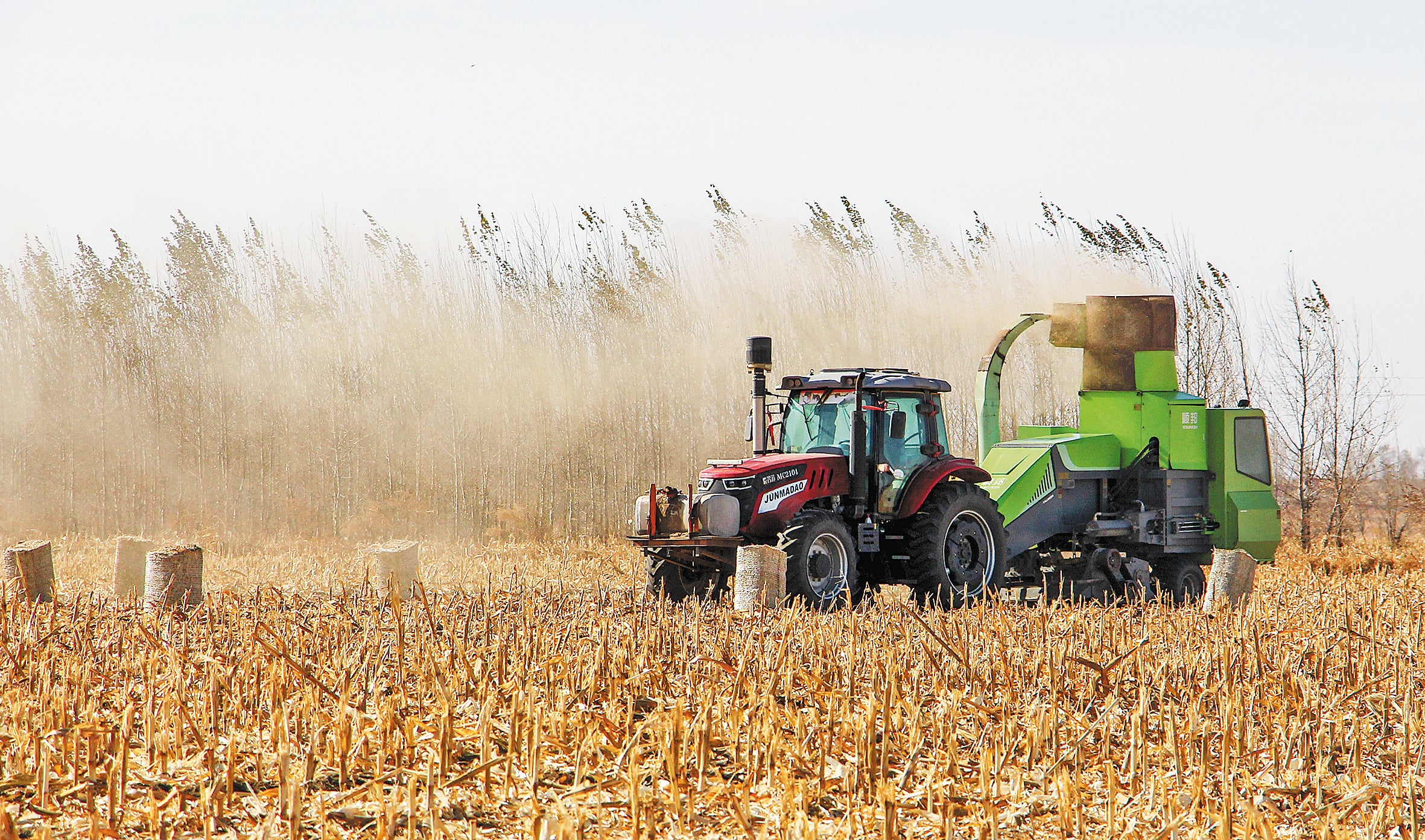Air quality action that keeps nation on track for climate targets
THE ARTICLES ON THESE PAGES ARE PRODUCED BY CHINA DAILY, WHICH TAKES SOLE RESPONSIBILITY FOR THE CONTENTS

Like their peers in many other parts of North China, generations of farmers in the Inner Mongolia autonomous region once used a simple method to dispose of straw stalks – they simply set them on fire on the farmland.
However, since the turn of the new millennium, when the central authorities imposed a ban as part of efforts to improve the control of air pollution, local authorities’ supervision of straw burning has evolved into a game of cat-and-mouse between law enforcement officers and farmers.
“As soon as the local government relaxed its supervision a little, farmers went to set fires, no matter whether it was day or night,” said Gao Yinhai, a farmer from the region’s Hinggan League.
With his home area shrouded in heavy smoke, visibility on the local highway was sometimes no more than 100 yards, said Gao, who runs Kunpeng, a dairy cattle co-operative.
Now, instead of polluting the air, the straw stalks in many of Inner Mongolia’s major grain-producing areas are contributing to efforts to promote rural vitalisation and help the country reach China’s climate targets: peaking carbon dioxide emissions before 2030 and becoming carbon neutral before 2060.
A lot of agricultural waste and animal dung is transformed into biomass fuel, a clean, renewable energy source. While the smoke that blocked out the sky has gone, an industry chain has come into being, with many farmers making stable incomes by collecting straw stalks.
As a major grain-producing area, Inner Mongolia boasts about 28.4 million acres of farmland.
According to a survey of pollution sources in the region published in 2020, more than 36.7 million metric tons of straw stalks are generated every year.
While promoting traditional approaches to the disposal of straw stalks, such as digging them into the soil as organic fertiliser or compressing them to produce animal fodder, places such as Bayannuur have tapped into the potential of waste material as a source of biomass fuel.
In 2017, the city introduced a biomass power-generation project with a total investment of 277 million yuan (£30.4 million). Since becoming operational on May 8, 2019, the project has not only helped improve the environment and mitigate climate change, but also provided financial benefits for local farmers.
Li Huaiqing, general manager of Hanglong Biomass Power Generation, the company that runs the project, said that in addition to generating about 210 million kilowatt-hours of electricity per year, the project supplies 250,000 metric tons of industrial steam and provides heating for more than 16 million square feet of housing. This results in the use of standard coal being reduced by 95,000 metric tons and lowers carbon dioxide emissions by roughly 210,000 metric tons every year, he added.
According to the department of industry and information technology in Bayannuur’s Hanggin Rear Banner district, since the project went into operation it has consumed more than 1.2 million metric tons of straw stalks. In addition to employing 120 local people, the project has benefited more than 3,000 people, as the company has paid 320 million yuan (£35.12 million) to local farmers to buy their straw stalks, it added.
One of the beneficiaries is Zhu Xiaomei, who lives in Bayannuur’s Menghai township.
The 43-year-old used to take whatever odd jobs she could find – such as working at a local coal washing plant – when she could spare time from her approximately 17.3 acres of farmland.
Now, she can make a more stable, higher income as an agent collecting straw stalks for the biomass plant.
All she needed to do to start her straw-collection business was to buy a strapping machine, she said. Thanks to the project, many local farmers no longer burn straw.
“The air quality has improved, while the biomass power plant has brought considerable financial benefits to local people,” she added.

Bookmark popover
Removed from bookmarks